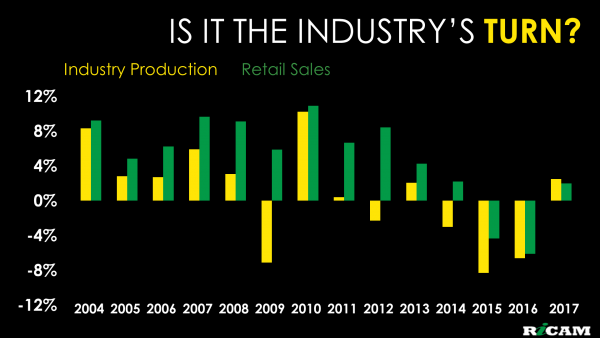10/2018
By Ricardo Amorim

Brazil recently appeared again on the cover of The Economist in a not altogether flattering light. It is impossible to forget the iconic cover of the magazine with Christ the Redeemer flying high with the title “Brazil Takes Off”, in 2009.
We submerged since. No shortage of reasons. One of them was the de-industrialization of the country under the Lula and Dilma respective administrations. Industry lagged behind retail in Brazil every single year from 2004 to 2016. Several steps were taken during this period to foster consumption, but nothing was done to enhance production in the country.
With more credit available, people took to shopping and initially stepped up sales, hirings and salaries. Higher salaries increased production costs. Without measures to increase productivity to make up for this effect, factories kept shutting off. It was cheaper to import products than to produce them here. Consumption increased but production did not keep pace.
As illustrated by the famous Aesop’s fable about The Grasshopper and the Ant, a country cannot forever consume more than it produces. Inevitably, with the closing of factories and the consequent disappearance of jobs, Brazil plunged into an economic crisis. The crisis ushered in a surge in the dollar price – which made imported products more expensive – and a huge increase in unemployment – which knocked down salaries, reducing the cost of production and temporarily restoring competitiveness for products made here.
A Labour Reform took place last year, significantly reducing the number of labour lawsuits and consequently also reducing legal costs for companies, allowing them to pay their workers more due to spending less on Labour Justice costs. The result? Industry surpassed commerce for the first time in 14 years.
If the next administration is capable of adopting new measures to reduce the cost of production in the country, such as the Tax Reform, de-bureaucratization, reduction of the public machinery and improvement of the infrastructure and of education, Brazil may appear again on the cover of The Economist. The Christ Redeemer’s rocket would have two engines this time – consumption and production; rather better than the solitary consumption engine, which ran out of fuel soon after the 2009 front page.
Ricardo Amorim is the author of the best-seller After the Storm, a host of Manhattan Connection at Globonews, the most influential economist in Brazil according to Forbes Magazine, the most influential Brazilian on LinkedIn, the only Brazilian among the best world lecturers at Speakers Corner and the winner of the “Most Admired in the Economy, Business and Finance Press”.
Click here and view Ricardo’s lectures.
Follow me on: Facebook, Twitter, YouTube, Instagram e Medium.
Translation: Simone Montgomery Troula




